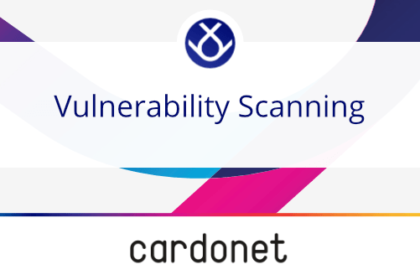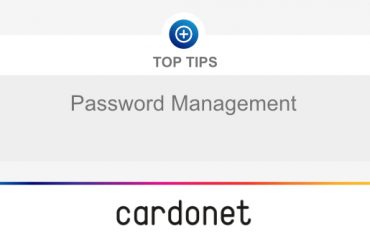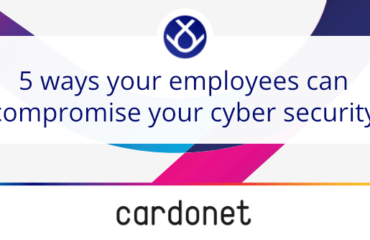
Almost 40% of UK businesses faced a data breach over the last year. Half of these businesses suffered a cyber-attack at least once a month, and for more than a quarter the attacks were weekly.
Your business’ data isn’t only valuable to you. It’s also valuable to the many talented and determined cybercriminals intent on exploiting any vulnerability that your IT ecosystem has. You need to know that your cyber security is strong enough to prevent them from doing so.
Vulnerability scanning will let you find and mitigate these risks, making your data and business more secure.
What is Vulnerability Scanning?
Vulnerability scanning is an automated process which identifies vulnerabilities in your business’ systems, software, and IT infrastructure.
You can think of ‘vulnerabilities’ as the chinks in your cyber security’s armor. These are the weaknesses that hackers will exploit.
Once you know where these weak spots are, you can take steps to protect your data. Your cyber security strategy can then target where your system is most at risk and identify what your business needs to do to keep it safe.
To be effective, these scans need to be done regularly. It needs to be regular so that any new vulnerability does not remain in your system long enough for a hacker to exploit it. How regularly you need to scan will depend on the size and budget of your business, but you should aim for monthly or quarterly scans at the very least.
Scans should also be done after any change to your IT system. If you put new staff laptops on your private network, or begin using new software, it is a good idea to conduct a vulnerability scan to make sure that these changes haven’t inadvertently left your business at risk.
How does Vulnerability Scanning work?
Vulnerability scans will differ depending on the platform they are using and what they are targeting.
Generally, though, they will scan your system and identify potential security risks, such as out-of-date software and coding bugs. It will use an updated reference database of security risks to establish whether your system’s responses indicate any security flaws. It will then create a report that details what these risks are, and how severe a threat they pose.
Types of Vulnerability Scanning
‘Vulnerability scanning’ is an umbrella term – there are a few different ways this process can be done, depending on your business’ needs.
Your scan could be internal or external.
If it’s an external scan, the software will target your system’s perimeter. Think of the websites, ports, or applications that are not restricted to your internal users.
It’s difficult to overstate how important this kind of vulnerability scan is. If you have cyber security weaknesses on your IT system’s perimeter, hackers can deploy a similar kind of automated software to detect and exploit them. You need to find out what these weaknesses are before they do and mitigate any risks accordingly.
An internal scan, on the other hand, finds security flaws on your internal network: that is, the parts of your system not accessible through the internet or an open port.
If you have devices that pose a security risk on your private network, for example, an internal scan will alert you. Similarly, if your team uses software that may lead to a data breach, the scan will pinpoint it.
Internal vulnerability scans are just as important as external ones, especially if your IT system is a large and complex one. If you have many devices on your private network, which will likely be the case if your business has embraced hybrid working, you need to be sure that you are aware of any potential security flaws.
Your vulnerability scan will also either be intrusive or non-intrusive. A non-intrusive scan will alert you to a vulnerability, but it will not exploit it.
This is useful – you’ll know how likely it is that an attack may happen, but you don’t need to worry that the process of finding a vulnerability may lead to any disruptions to your network.
An intrusive scan will identify the vulnerability and attempt to exploit it. The upside is that you’ll find out what would happen if a hacker was able to exploit the weakness. Exactly how much data is at risk? How much would this affect your business’ operations?
The downside is that if not managed well, an intrusive scan could cause real disruption to your systems.
Who should conduct your vulnerability scan?
You have two options. You could have your IT department undertake the scan, or you can outsource it to a third-party service and support provider, like Cardonet.
If you have a large, expert, and comprehensive IT department, you may want to keep it in-house. Otherwise, outsourcing it is the best solution.
If the scan is managed by a trusted third-party, you’ll know that the most effective software is being used, that best practice is being followed, and that the scans themselves will be conducted in a manner that fits your business’ needs.
Going forward
Vulnerability scanning is key to a comprehensive cyber security strategy. Data breaches pose a huge threat to your business, and the best way to deal with that threat is to take a preventative stance.
We at Cardonet are experienced cyber security partners, and we can help you build strong vulnerability management from the ground up.
If you’re looking for a trusted IT partner to help you and your team build strong defences against cybercriminals, reach out to us today on +44 203 034 2244 or +1 323 984 8908. Alternatively, you can contact us online.
Our friendly team will help guide you through your options and will help ensure that you get the right IT Outsourcing contract for your organisational needs. We have engineering bases in the United Kingdom, Europe and Southern California and our group of highly experienced engineers are available 24/7 to assist and ensure that your business’ IT infrastructure is running seamlessly.



You must be logged in to post a comment.